Seen on Monday's Walk
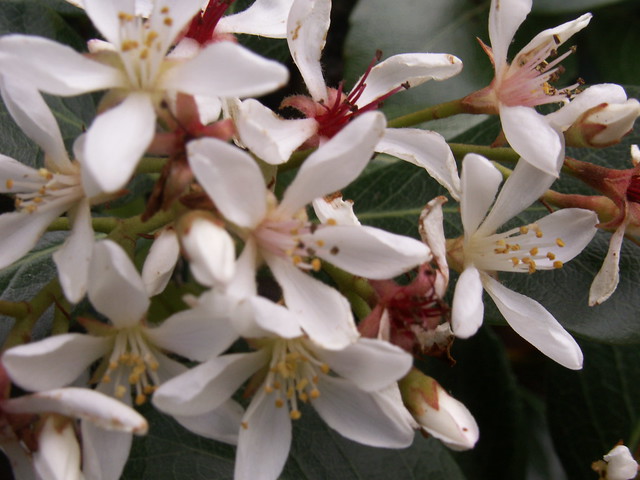
We begin in our front yard, where our Indian hawthorne bushes are flowering. Despite its name, Raphiolepis indica is native to China, according to the University of Florida.
Before Mary and I set out in earnest, I photographed these snapdragons in our back yard:

Antirrhinum majus, Family Scrophulariaceae.
I then took some time for a bumblebee photo shoot. This individual is gathering pollen from the blooms on our viburnum:
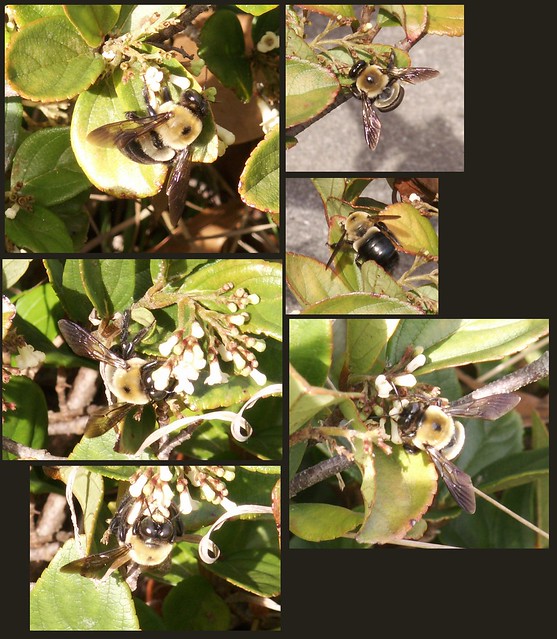
Large
Then we were off for our usual "post office walk." (The post office is about a mile from home.) We stopped at what we call the "post office pond," a nearby retention pond.
Recently a fence was erected around the pond. I can no longer head down to the water's edge, so I took these shots through the chain links.
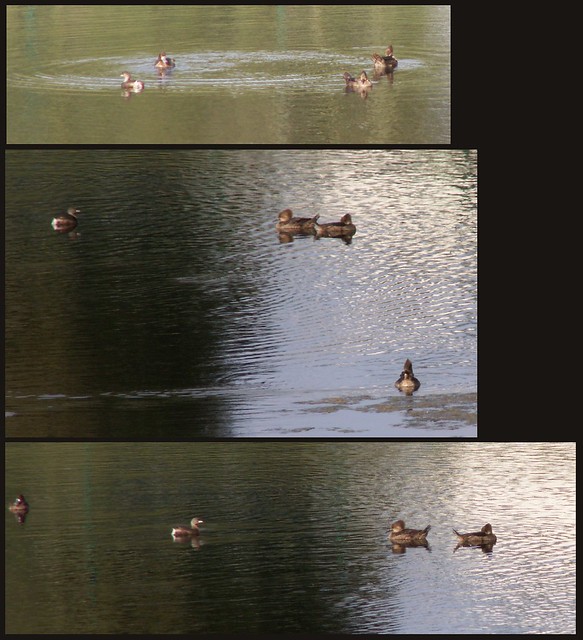
Large
I believe these are female ring-necked ducks, but they were too far away for me to tell for certain. Not far from them was this immature red-shouldered hawk:
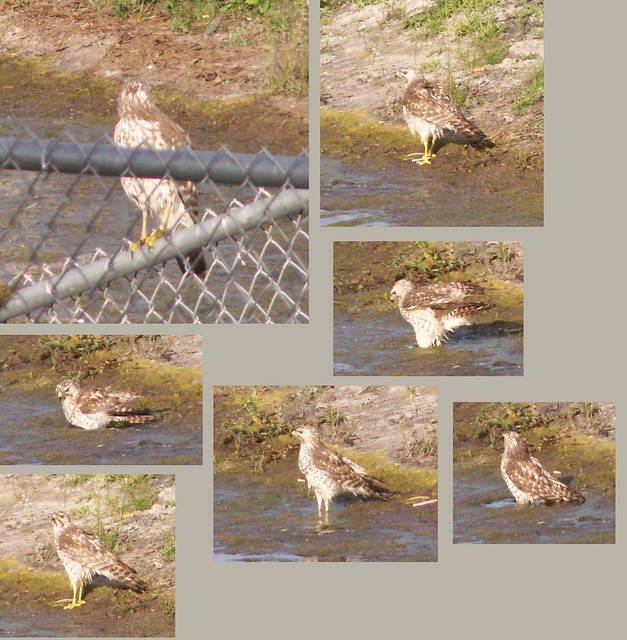
Large
Mary called my attention to the adult perched on a fence to the left of the pond. This individual might be a parent of the immature hawk:
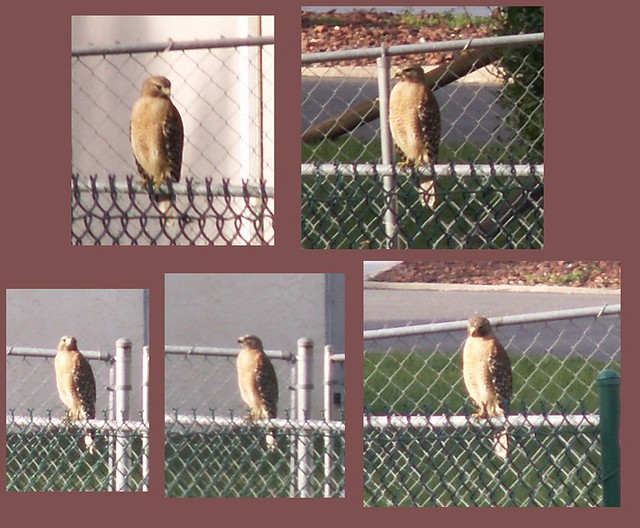
Large
Buteo lineatus , Subfamily Buteoninae (Buzzard Hawks) Family Accipitridae (Hawks, Eagles, etc.). This is a pale Florida form of the hawk, which includes five subspecies (four on the East Coast and one in California), according to the Cornell Lab of Ornithology.
This purple flower (I don't yet know the species) grew just outside the retention pond fence:
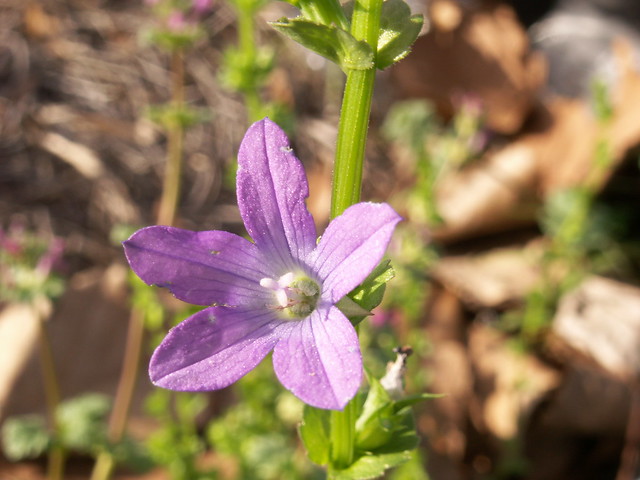
Large
On our way home, we passed this Bottlebrush:
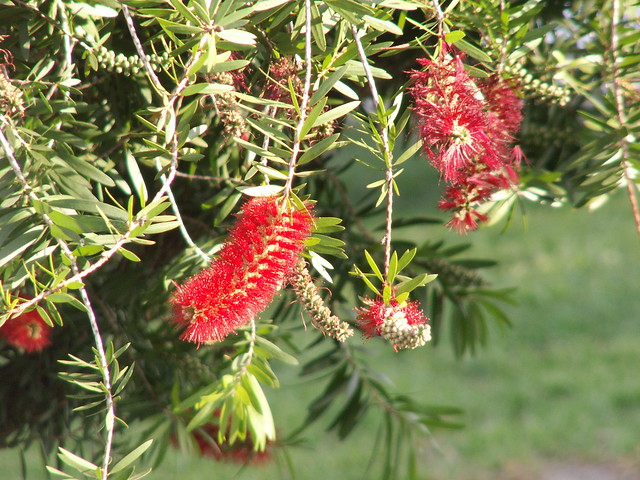
Large
Callistemon citrinus, Family Myrtaceae (Myrtle Family). This plant is native to Australia, according to Floridata.

Large
This male Eastern Bluebird was perched on a neighbor's roof:
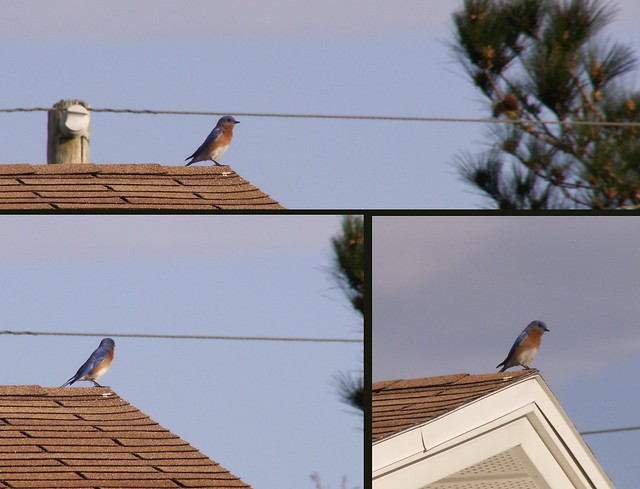
Large
Sialia sialis , Family Turdidae (Thrushes). "The blue in bluebird feathers is produced by air-filled cavities within the keratin of the cells in the feathers," according to Sialis. "They are not iridescent like the feathers of a hummingbird, and thus the hue looks the same regardless of the viewing angle. The feathers of a male bluebird reflect a lot of UV light which makes them brighter. Feathers of females look more subdued because their structure is different. Humans can't see UV wavelengths, but birds can."
By the time I had finished going through my shots at home, the sky had darkened enough so that Venus and Jupiter were visible in the west:
 .
.Large
On March 15, a Venus-Jupiter conjunction will occur, according to Universe Today. On that date, the two planets will pass within 3 degrees of each other. Venus is the brighter object at right.












0 Comments:
Post a Comment
<< Home